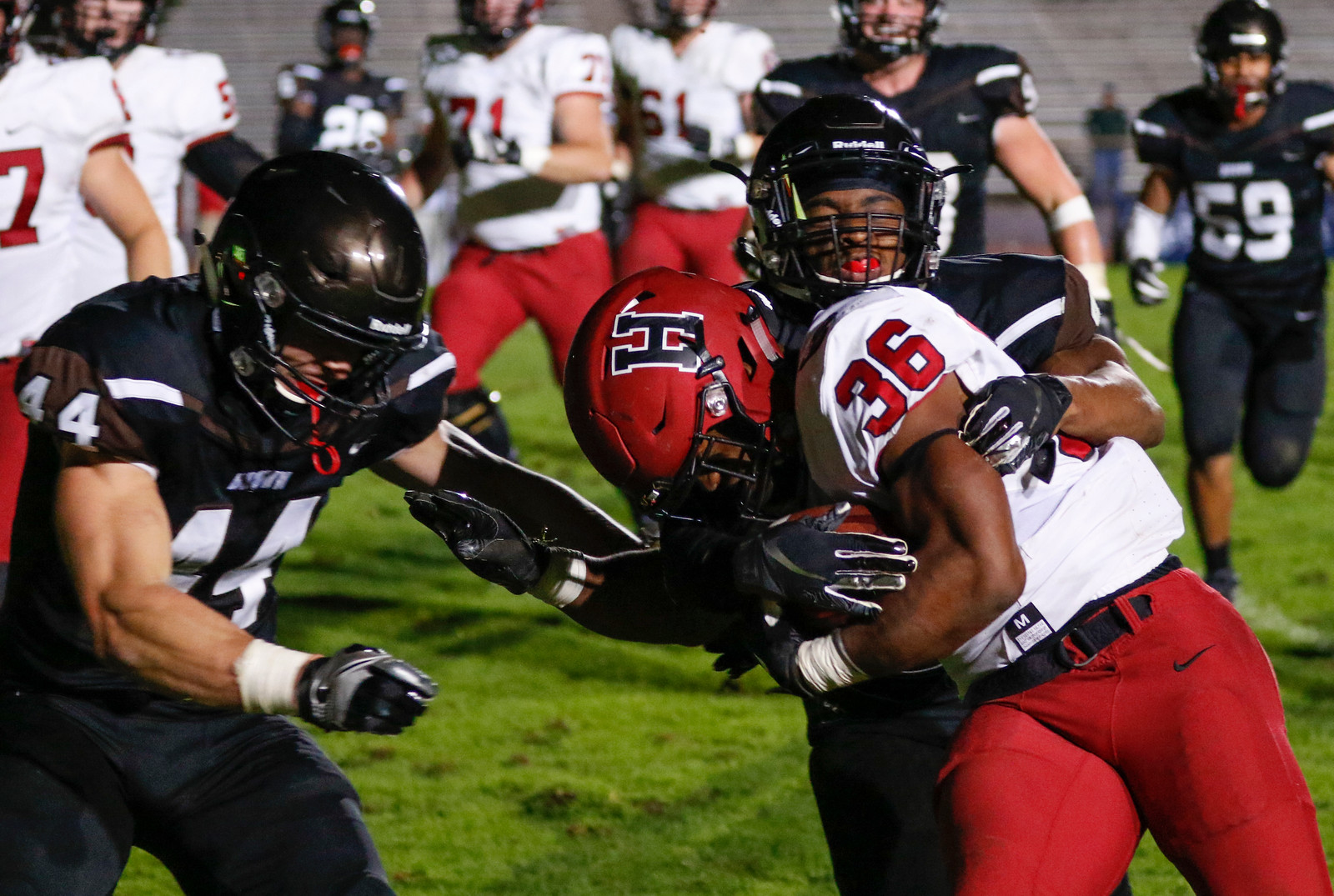
News
Summers Will Not Finish Semester of Teaching as Harvard Investigates Epstein Ties

News
Harvard College Students Report Favoring Divestment from Israel in HUA Survey

News
‘He Should Resign’: Harvard Undergrads Take Hard Line Against Summers Over Epstein Scandal

News
Harvard To Launch New Investigation Into Epstein’s Ties to Summers, Other University Affiliates

News
Harvard Students To Vote on Divestment From Israel in Inaugural HUA Election Survey
Concussions Plunge as Ivy League Experiments with New Kickoff Rule

The kickoff is the most violent play in college football. Setting up a full sprint of the two teams toward each other, more concussions occur during these kickoffs than any other play, but the Ivy League has been working to change that.
A study released by the Journal of the American Medical Association on Oct. 1 supports the experimental Ivy League kickoff rule’s effectiveness in reducing the incidence of concussions.
The researchers, Douglas J. Wiebe, Bernadette A. D’Alonzo, Robin Harris, Margot Putukian and Carolyn Campbell-McGovern, summarized the study’s results in a research letter titled, “Association Between the Experimental Kickoff Rule and Concussion Rates in Ivy League Football.”
For the past two seasons, the division’s football teams kickoff from the 40-yard line, as opposed to the 30-yard line in previous seasons. Additionally, touchbacks can be called from anywhere behind the 25-yard line and if a touchback is called, the ball is placed at that 25-yard line rather than the 20-yard line of the years past.
The study measured the number of concussions during kickoffs in the three seasons prior to the rule change and during the two seasons following. From 2013 to 2015, the incidence of concussions on kickoffs was 10.93 for every 1000 plays. In the two years succeeding the rule’s implementation, the incidence rate decreased to 2.04 for every 1000 plays — more than a 68 percent reduction.
“I think it’s a no brainer. I just think it makes so much sense,” Harvard coach Tim Murphy said. “If you move the kickoff line up, you’re definitely going to have more touchbacks and therefore you’re going to have less high speed collisions. It’s such a no brainer that I can’t believe that it won’t eventually adopted by the NCAA.”
The rule is aimed at increasing the number of touchbacks on kickoffs, thus preventing any full scale contact on the play. In the three years prior to implementation, kickoffs resulted in touchbacks an average of 17.9 percent annually. In the 2016 and 2017 seasons, that mean increased to 48 percent.
“I think it's good, I think this is what it’s going towards,” said Harvard senior defensive tackle Richie Ryan. “I think they’ve found something that works so stick with it. Kickoff and kick return are just becoming more old style football that I don’t think is going to last much longer.”
The NCAA has since adopted portions of the rule, allowing any fair catch signaled within the 25-yard line to count as a touchback. In the past, players could only signal a touchback if there caught the ball in their own endzone.
Concussion review in the Ivy League began in 2010 with the formation of a special ad hoc committee. The committee was chaired by then-Dartmouth President Jim Yong Kim and then-President David J. Skorton and was comprised of a number of coaches, administrators, consultants, team physicians and trainers.
The committee’s initial recommendations — taking effect in the 2011 season — limited the number of full contact practices, specified education athletes would receive surrounding head trauma and made the post-game review of helmet-to-helmet contact more stringent.
This committee also began to review kickoffs, noting in it’s study that while the kicks only accounted for 5.8 percent of plays, the collisions caused during the kickoffs accounted for 23.4 of concussions during games.
In 2016, the coaches of the Ancient Eight squads unanimously voted to approve a rule prohibiting full contact football practices, another effort to address concussions. Only weeks later, the National Football League acknowledged for the first time the link between CTE and playing football.
“The action taken by Ivy League leadership based on epidemiologic evidence demonstrates how targeted policy changes can reduce sport-related concussion,” the researchers wrote in the letter. “Although these results may not generalize beyond the Ivy League, they may inform the NCAA as it considers adjusting the kickoff rules in football in all collegiate conferences.”
—Staff writer Cade Palmer can be reached at cade.palmer@thecrimson.com. Follow him on Twitter @THC_CadePalmer.
Want to keep up with breaking news? Subscribe to our email newsletter.
